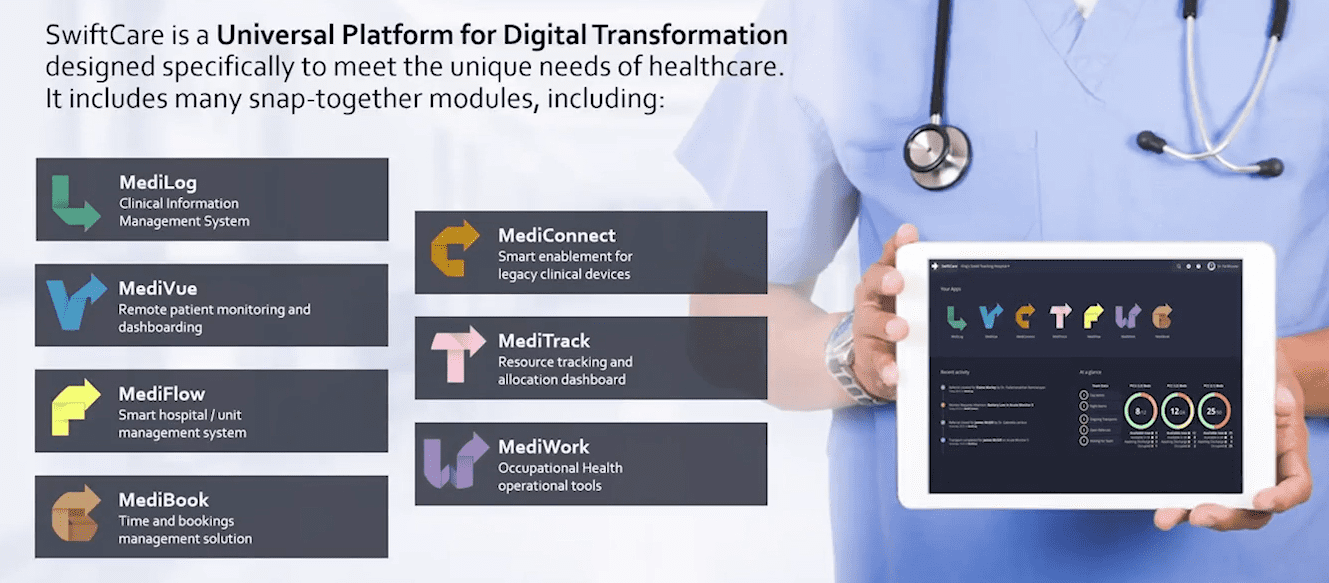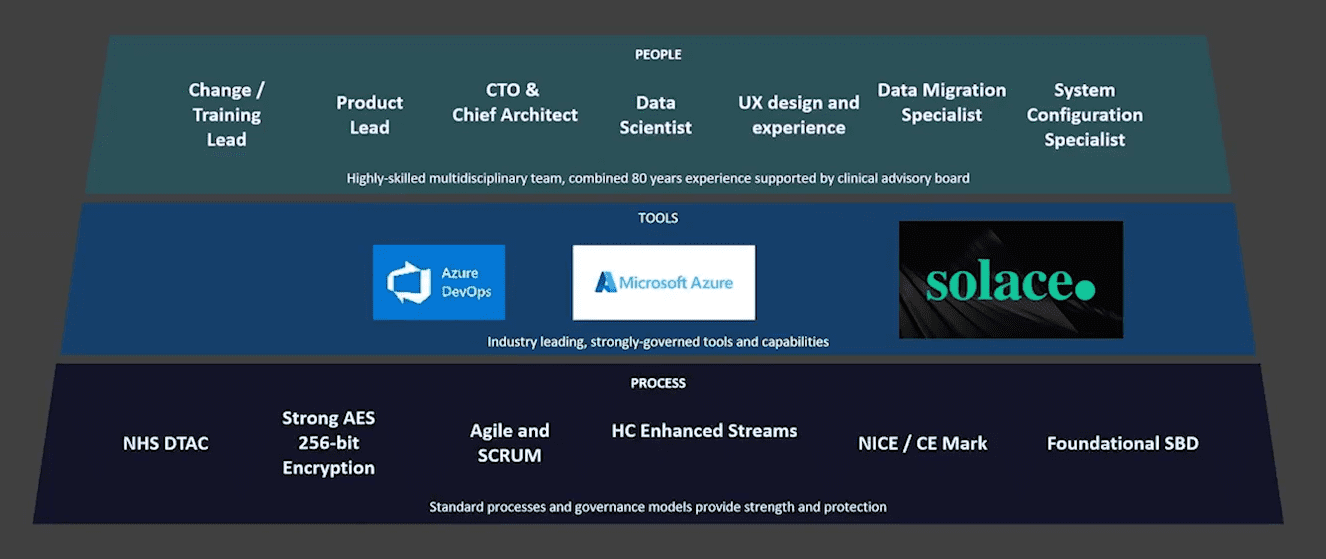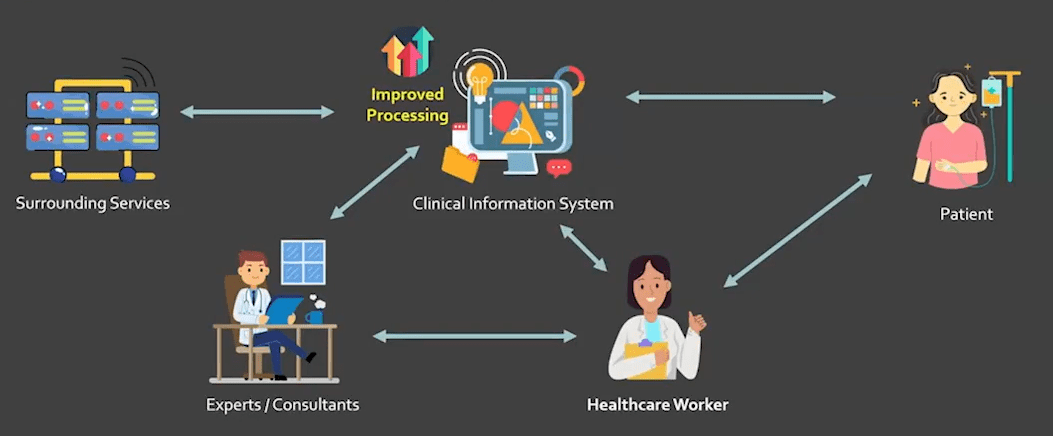Home > Blog > Industry Solutions > Healthcare
Subscribe to Our Blog
Get the latest trends, solutions, and insights into the event-driven future every week.
Thanks for subscribing.
Healthcare is one of the most complex, data-intensive domains out there—and often one of the most technologically underserved. From primary care to occupational health, clinicians and care teams need fast, accurate access to data to make better decisions and respond quickly to patient needs. But legacy systems, rigid data models, and outdated integration patterns have long stood in the way.
At EDA Summit 2024, Bob Hundal, CTO of Kinseed, shared how their Swiftcare platform is transforming healthcare delivery through a modern, event-driven architecture.
You can watch the full presentation below or at EDASummit.com.

Bridging the Gap Between Data and Patient Outcomes
Kinseed’s mission is ambitious: to build a flexible, composable healthcare platform that adapts to clinicians—not the other way around. Their Swiftcare platform combines several tailored applications, including Medilog for clinical information management, Mediview for patient monitoring, and Mediwork for occupational health. Together, these tools form a cohesive system that spans primary, secondary, tertiary, and occupational care, helping clinicians and care teams collaborate more effectively and respond faster to patients’ needs.

Unlike many traditional platforms that force users to adapt their workflows, Swiftcare is built to fit seamlessly into existing clinical practices—minimizing training time, reducing friction, and improving adoption.
Legacy Systems Were Holding Healthcare Back
As Bob explained, most healthcare organizations still rely on legacy systems that are proprietary, tightly coupled, and difficult to adapt. This creates significant barriers to innovation, limits the ability to share data efficiently, and makes customizing workflows unnecessarily complex—challenges Kinseed was determined to overcome.
Their vision was to change that by delivering a platform that’s cloud-native, mobile-first, and designed for scalability across multiple dimensions. Feature scaling allows them to introduce new functionality quickly. Vertical scaling supports movement between healthcare domains through flexible, reconfigurable data models. And engine scaling enables them to extend the platform into other industries that face similar challenges, all while maintaining performance and adaptability.
Real-World Impact Across the UK Health System
Swiftcare isn’t just theoretical. It’s already making a measurable impact across the UK.
- 80 percent of acute pediatric transport services now rely on Swiftcare to capture and manage over 300 critical data points during patient transfers.
- In Birmingham, new tertiary care triage services were deployed in just three weeks using Medilog. These services now enable school nurses and general practitioners to consult pediatric specialists before sending children to the hospital—saving time for families, clinicians, and emergency departments.
The platform is in use across over 600 other locations, including NHS occupational health programs where healthcare workers use the system to manage their own wellbeing and track personal health while at work.
Why EDA Was the Missing Piece
At the heart of this transformation is Kinseed’s adoption of EDA. Traditional healthcare systems couple data, business logic, and workflow orchestration into tightly bound modules built in proprietary languages—making them slow to adapt and scale. Kinseed broke away from this model by decoupling data from application logic, enabling greater flexibility and performance.
This architectural shift allowed them to distribute data in real time, integrate systems more seamlessly, and empower informatics teams and clinical developers to build new workflows independently using tools like Azure Functions and Logic Apps. Rather than becoming a bottleneck for innovation, the platform now acts as a catalyst—letting healthcare professionals access and act on data when and where it’s needed most.
Data in Motion: Real-Time Healthcare in Action
Through the use of EDA, Kinseed has unlocked a new level of real-time responsiveness. During ambulance transfers, patient vital signs are now streamed directly into a secure web application, allowing remote specialists to observe conditions in real time. At the same time, those vitals are automatically recorded into the patient’s clinical record, ensuring traceability and continuity of care from origin to destination.
In traditional systems, these vitals would have been logged on paper and transcribed later—losing valuable context during the critical moments of care. Now, clinicians can observe, subscribe to, and respond to streaming data instantly, with greater transparency and accountability.
A Platform Built for the Future of Care
Kinseed’s adoption of EDA has allowed a small, agile team to leapfrog traditional systems and deliver capabilities that larger vendors still struggle to implement. It’s not just about upgrading technology—it’s about enabling better care through data fluidity, real-time responsiveness, and the empowerment of clinical decision-makers.
Whether it’s supporting paramedics, pediatricians, or NHS staff, Swiftcare is proving that EDA isn’t just a technical improvement—it’s a true enabler of modern, patient-centered healthcare.

Explore other posts from categories: Healthcare | Industry Solutions

Greg has been marketing middleware for most of his career, across a long tenure with Solace and TIBCO before that. He enjoys helping people understand the importance and impact of "event-driven" by crafting clear copy and compelling visuals that tell the tale.


Subscribe to Our Blog
Get the latest trends, solutions, and insights into the event-driven future every week.
Thanks for subscribing.


